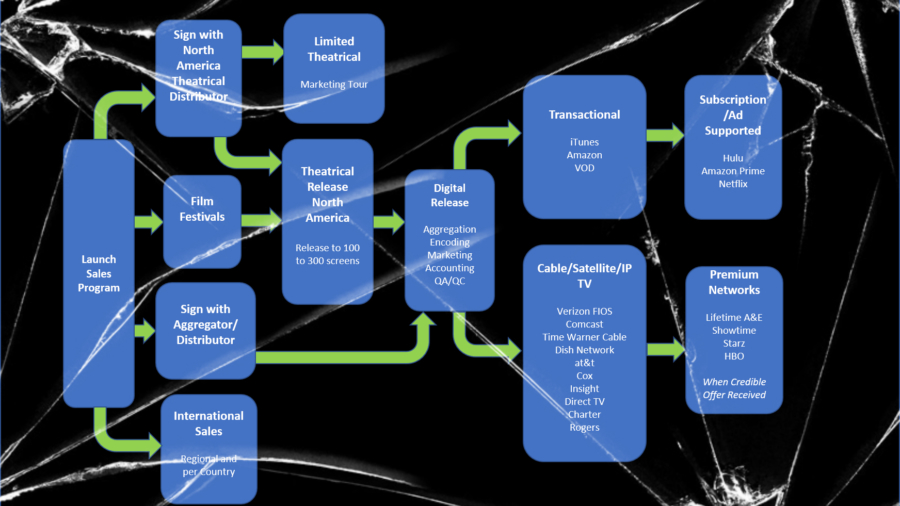The film industry is completely fragmented; there are no clear-cut structures that dictate the norms of the film production and distribution pipeline. Historically speaking, the film industry was like any other form of entertainment based on escapism, the tendency to seek distraction and relief from unpleasant realities. This is one reason film, like gambling, alcohol, sports, etc. are more popular than other social outlets during depressed economies.
Over the last century, the film industry has experienced a significant shift in who controls the power of the ticket price, which ultimately decides who controls the market: the studios or the consumers. Movie goers have an increasingly growing set of alternatives in movie entertainment and it’s expanding more and more each year. If a film lover is patient, they can wait to see a blockbuster through their subscription or just sit through a few commercials and see it for free.
The second significant shift is the power of independent filmmakers to create content. Producers are no longer required to get their projects “green lit” by the major studios and the pool of quality productions is growing exponentially every year.
Perhaps the greatest paradigm shift has been in distribution. Studios controlled the talent, the sets, access to technology and ultimately the distribution with heavy influence on theater owners who could not exist without their content. If you wanted to watch a movie, you had to go to the theater, plain and simple. With the hyper expansion of television and cable, the traditional distribution model transformed, but without access to vast amounts of capital, viewers were still at the mercy of the major cable providers. That gave way to rental houses like Blockbuster and Netflix who gave consumers more options, but still dependent upon the studios who were the only ones providing high quality content.
Then two major events took place: the distribution services started to make their own content, and technology allowed for more efficient streaming platforms to emerge. This should have been writing on the wall for sales representatives and distributors, but still there are many who have not recognized that the traditional pipeline has been obliterated.
Don’t see it? Look at the record industry up until 1999. Record labels would have a recording artist under exclusive contract who had to depend on the company’s access and control of the distribution networks to sell their records. In 1999, a little company called Napster came out with a set of three music-focused online services. It was founded as a pioneering peer-to-peer file sharing Internet service that emphasized sharing digital audio files, typically audio songs, encoded in MP3 format. Napster was closed down in two years because of legal squabbling, but it was replaced by a new start up called iTunes. Record distribution companies knew immediately that the world that they owned was over, and within a few years, most of the major distribution companies were either out of business, or adapted to the inevitable… the fragmentation of the record industry.
Artists no longer had to ask permission to get the records made and in the distribution pipeline. New streaming platforms were coming on line each year. There were some that came and went, but ultimately, the industry completely shifted because no one needed to make a CD. They could set up their own websites and sell their records directly. Apple made the most of the fragmentation by bringing an alternative structure. Apple made it easy for artists to get their music on their platform, which was already available on the hardware every new purchaser of their iPods and the new iPhones had in their pockets. There was a new king of the hill.
Netflix, Amazon, HBO. Showtime, Disney and Apple are all restructuring the industry with their own streaming networks. They are spending billions of dollars to develop their own content and access content from independent filmmakers. The paradigm has shifted. Where the opportunities are for entrepreneurial minded filmmakers can be found in many areas in the filmmaking process from production to distribution. The old rules and norms are no longer in play. The opportunities are limitless.


Add a Comment